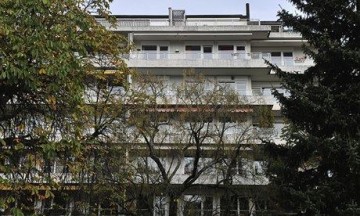
Originally published in the Marina Times San Francisco in January 2014
In November, authorities in Munich, Germany revealed that they had stumbled upon over 1,500 paintings, drawings and etchings by artists including Matisse, Picasso, Chagall and Klee. The artworks were stolen by the Nazis during World War II, and were hidden away in what was described as a squalid apartment. The story is still developing, but early estimates appraise the work to be valued at over $1.35 billion dollars, making this the most extensive haul in the history of art theft.
In 2010, an unassuming 80 year old German man caught the attention of the authorities when customs officials searched his bags as he traveled by train between Switzerland and Germany. He had an unusual amount of cash on hand and, though it was not illegal to travel with this much money on his person, the police decided to keep him under surveillance. Finally in 2011, the police were granted permission to search the man’s apartment.
A dark story has unraveled since the discovery was made over two years ago. The elderly man’s father is now revealed to be a well-known art dealer prior to World War II. During the war, he used his contacts to sell artwork to buyers, art that may have been included in the notorious “Entartete Kunst” exhibition of 1937. This exhibit, curated by the Nazis, displayed works looted from museums and deemed “degenerate.” Other theories suggest that the artworks were not from this exhibit, and are simply a collection stolen from French Jews during the occupation.
In any case, it appears that the dealer kept more of the stolen art than he sold. Indeed, the cover up extends through decades. The dealer stated that the works had all been destroyed when his home burned during the Dresden firebombing on February 13, 1945. Instead, the works were inherited by the dealer’s son, who allegedly sold them off slowly over the years to foreign collectors to maintain what he’d hoped to be a steady stream of income that would remain under the radar of the authorities.
The art dealer died in a car accident in 1956, and in the early sixties his widow testified that the art was destroyed during the Dresden fire. This false statement will likely forfeit any rights the now 80 year old son may have in terms of ownership.
Many are asking why the German authorities waited two years to reveal this astonishing discovery. As the story unfolds, it has been suggested that considerations regarding restitution delayed the public announcement about the theft. Also, the investigation may reveal more art hidden in other secret locations. A list of works has not yet been published, nor have any photographs.